Bentley Circular
26 March 2022. What beautiful weather we had – blue skies and sun, with a light breeze. Fourteen of us started from Bentley (Hampshire) station about 10am. Initially we went through a nature reserve which was muddy but we were able to go around the mud.
After passing a few holiday chalets at the back of a farm, we had a pleasant uphill section through a field of sheep. Then followed a long walk across the top of a massive exposed field with fine views of the surrounding rolling countryside. On the recce, I saw skylarks and a red kite above this field, but sadly not on the walk itself. However, we did see a red kite later in the day.
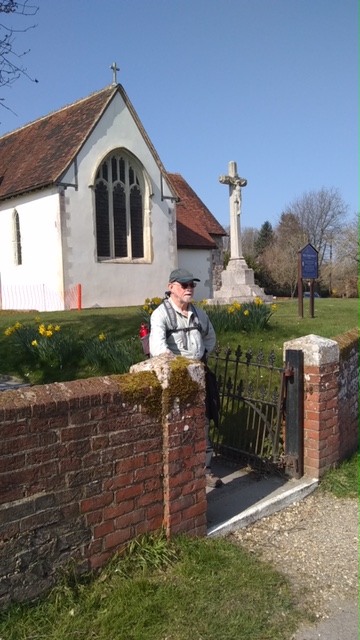
We reached the pretty village of Binsted and visited The Church of the Holy Cross. The nave and most of the chancel date from 1140 AD and we could see that in the chancel’s round arches, known as Norman or Romanesque. The north and south transepts each side of the nave were added between 1180 and 1195. So the arches in the nave were just a little pointed, showing the transition towards the pointed Gothic style arches of the 13th to the 16th centuries. We saw the banner of Field Marshall Montgomery, the 1st Viscount of Alamein, hanging in the church and we passed his gravestone in the churchyard.
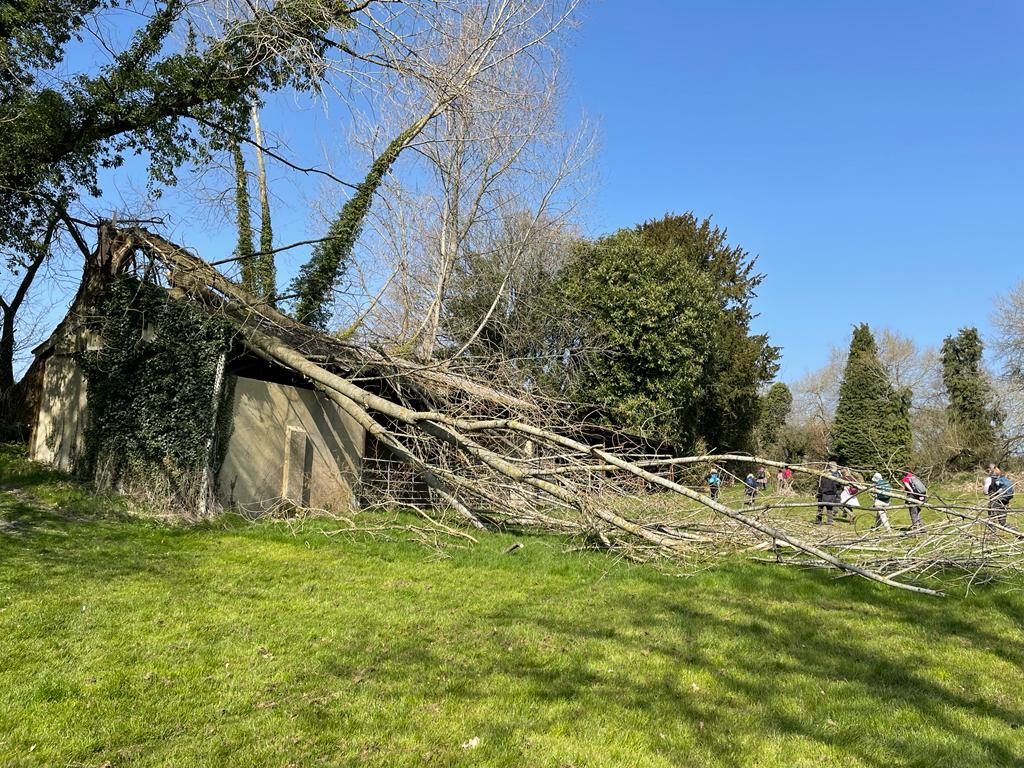
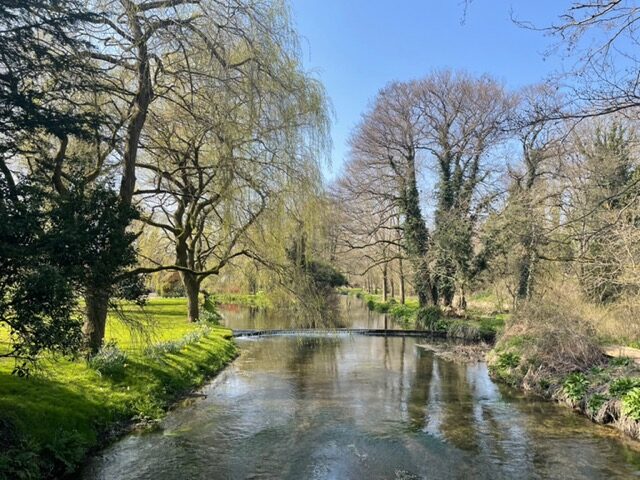
After a short section uphill, we crossed the busy A31 and arrived at our lunch pub, the Hen & Chicken. Six people had picnic lunches and eight of us had a meal in the pub, which serves good food including an excellent carvery with vegetarian and gluten-free options.
After lunch we went through the village of Upper Froyle where we saw religious statues on the front walls of the older houses. The statues were placed there by the last active Lord of the Manor in the late 19th Century. He spent the winter months in Venice from where he brought back religious statues and ecclesiastical garments.
Unfortunately the church was closed for refurbishment, but large photographs on the temporary fence around the church porch showed us some of what we missed. The most unusual feature of the church is the display of “hatchments” on the walls of the nave. A hatchment is a large wooden plaque showing the coat of arms of a person. From late Tudor times until the late 19th Century, it was the custom to display a hatchment outside the house in which had occurred the death of a person entitled to bear arms. Once the period of mourning was over, the hatchment would be moved to the local church. Very few churches still have hatchments on their walls.
We continued along the drive of the former Treloar School, now a hotel, then across fields on St Swithun’s Way, an old pilgrim’s route. We passed a very grand house called Coldrey and then through a wood with ponds on each side of us.
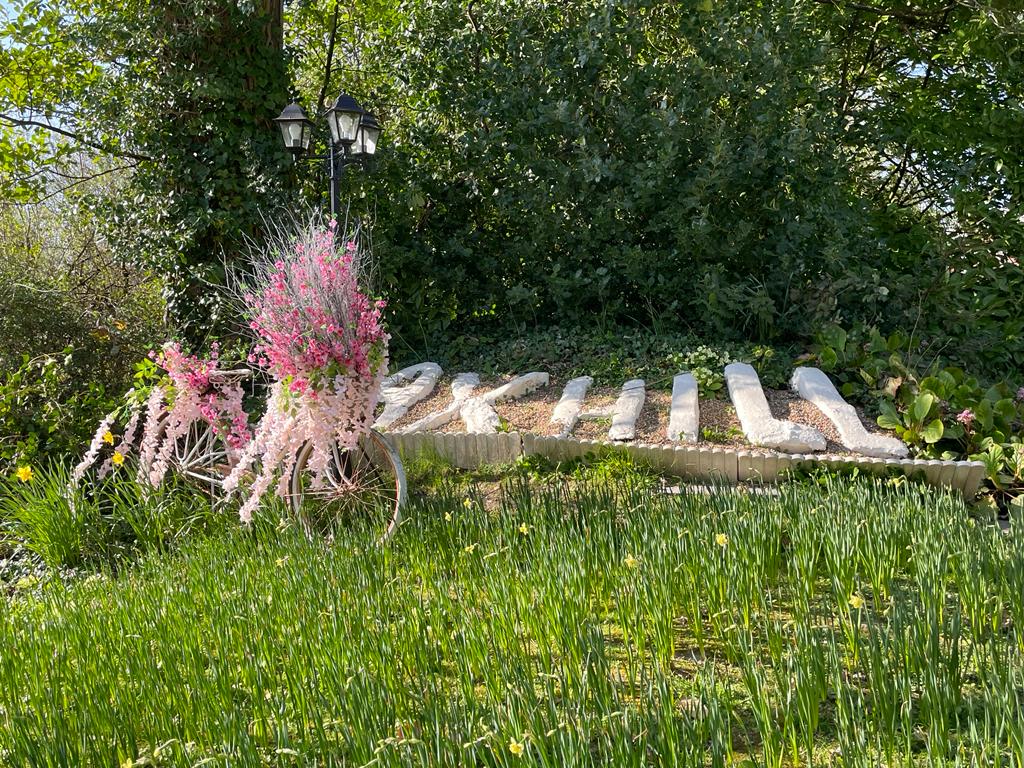
Pax Hill was the home from 1918 to 1939 of Robert Baden-Powell, founder of the Scout movement, and his wife Olave. Later it became a centre for Girl Guides from the Commonwealth, then a boys boarding school and now it’s a nursing home.
We turned along a path through a wood and then across fields before a short section through the Jenkyn Place vineyard, which had previously grown hops. We had already been reminded of the past presence of hop growing in this area by a number of oast houses, originally for drying hops, now converted into homes.
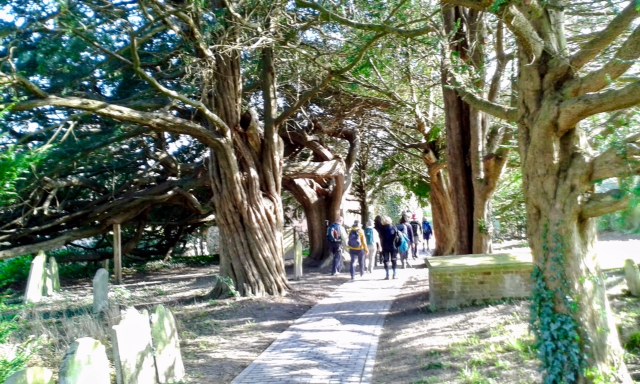
A section downhill took us into the centre of Bentley village. But the railway station was a further 25 minutes away – along a track, across a footbridge over the A31, past a sewage plant (!) and a travellers’ site to a picturesque footbridge over the River Wey, across a field to the approach road to the Bentley station – just in time for the 3.51pm train back to Waterloo arriving about 5pm.
Terry (with thanks to Christine M, Mary-Jane A, Sandra H and Virginia B for the photos)


